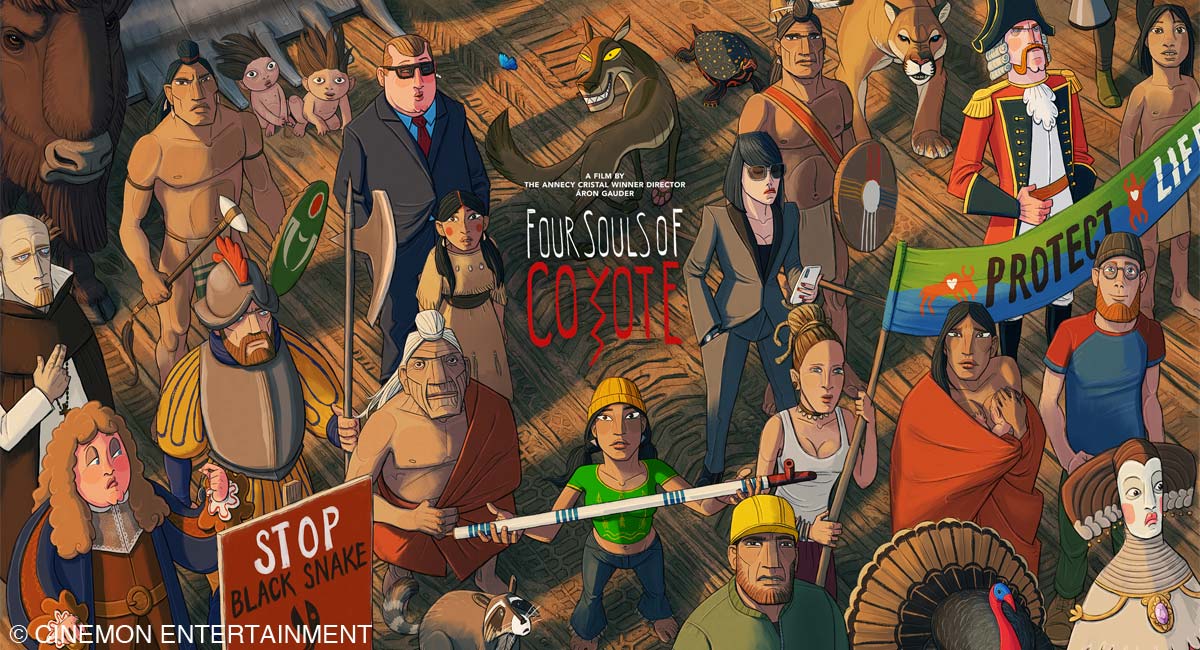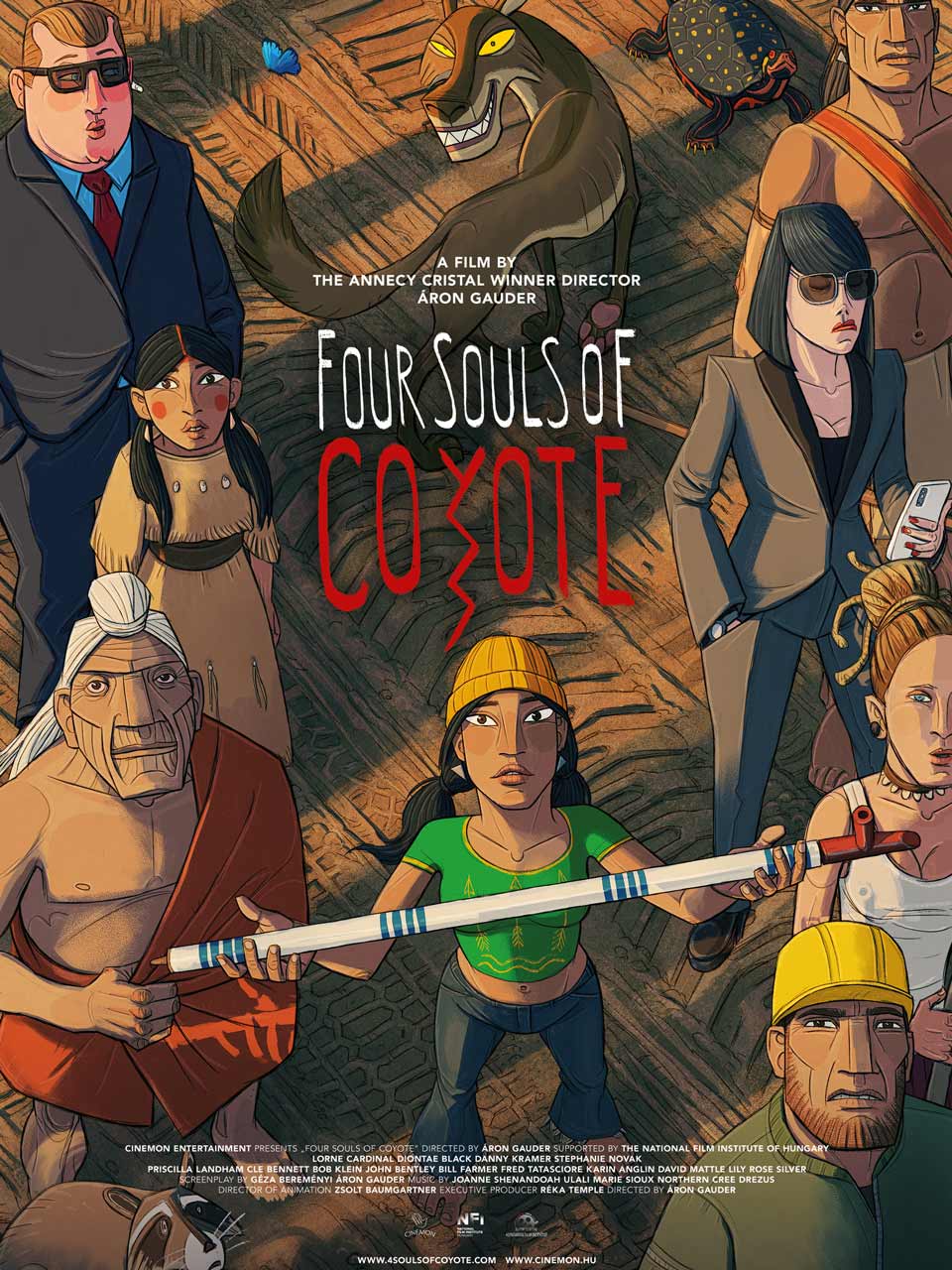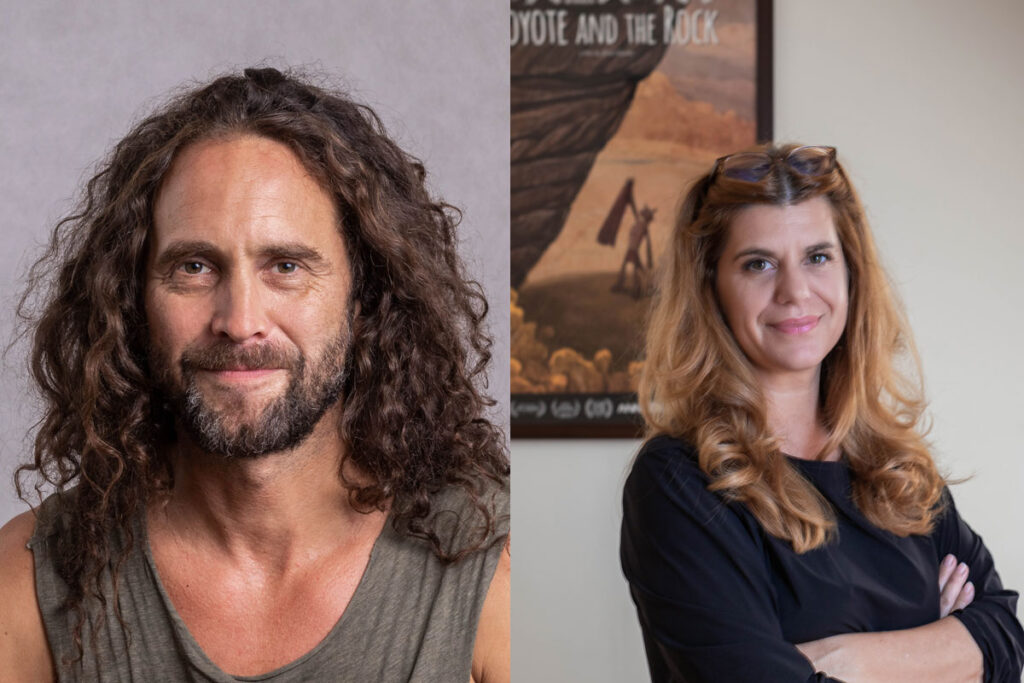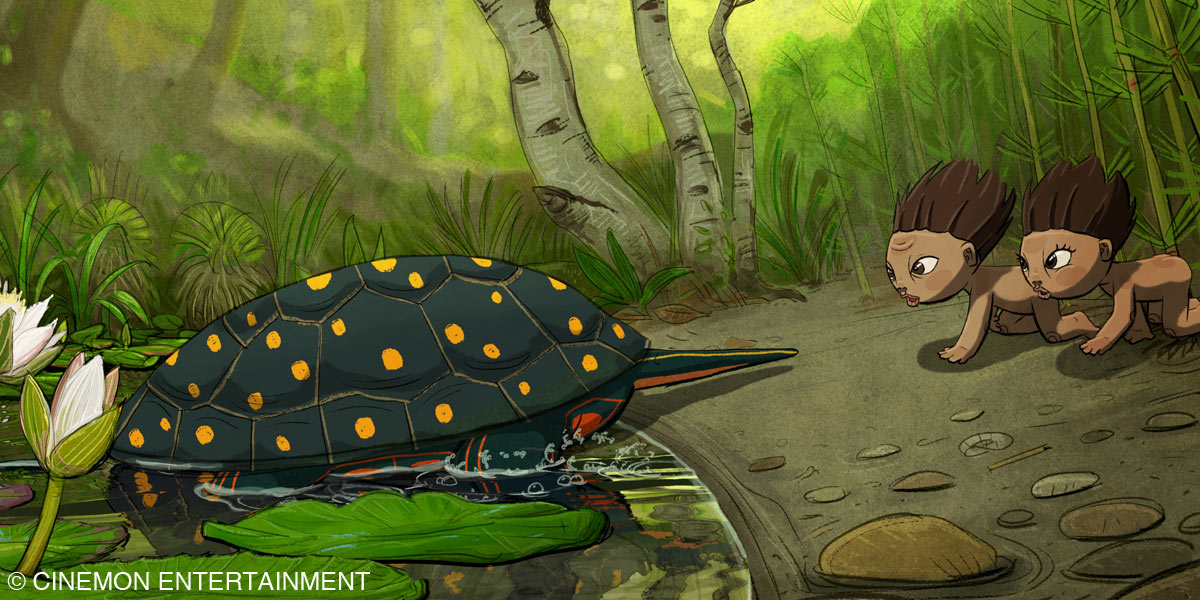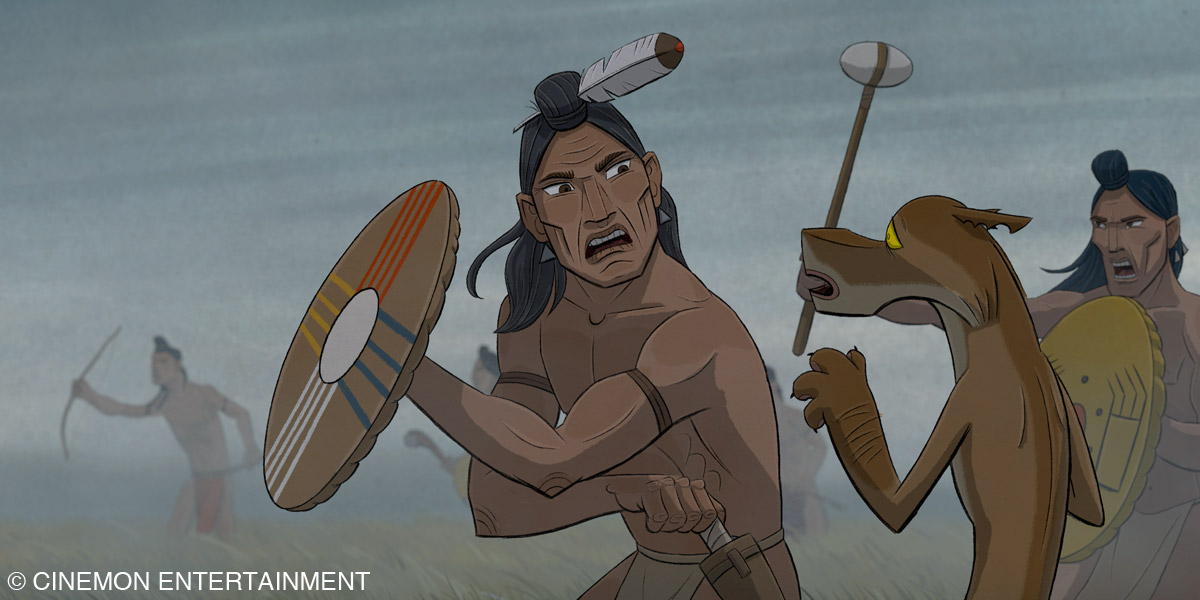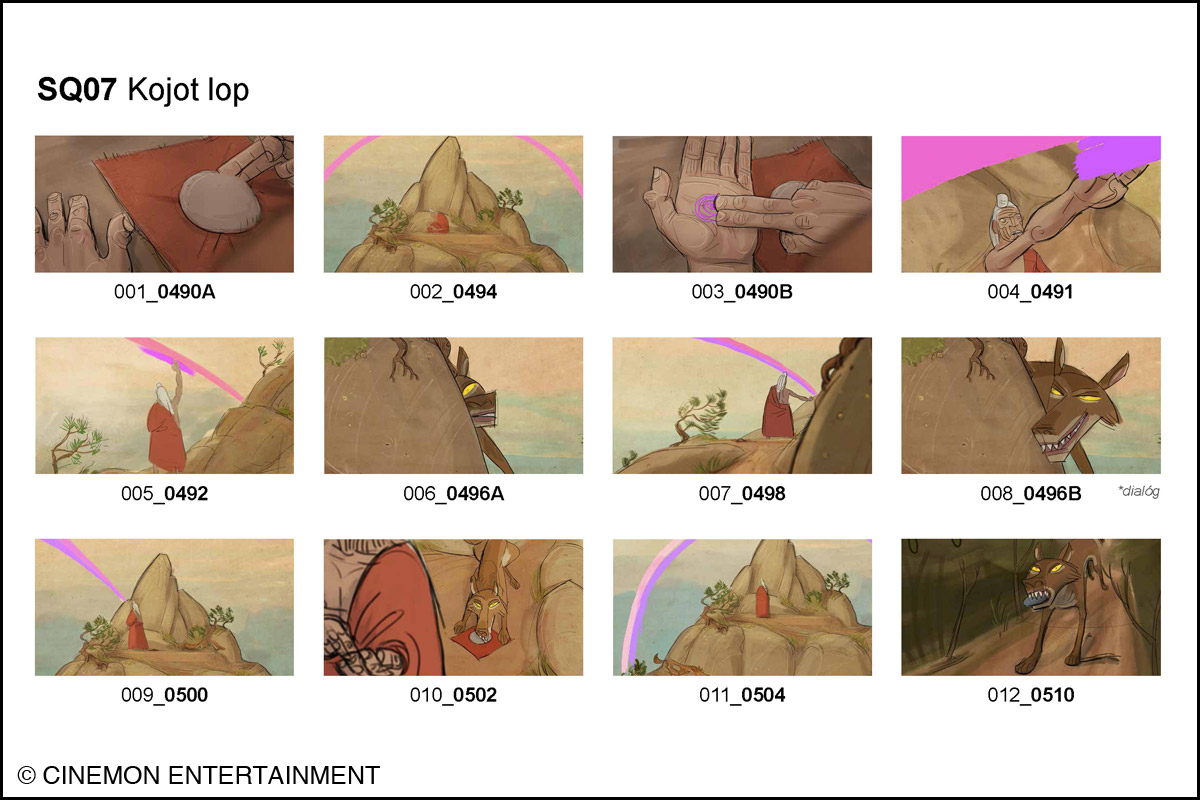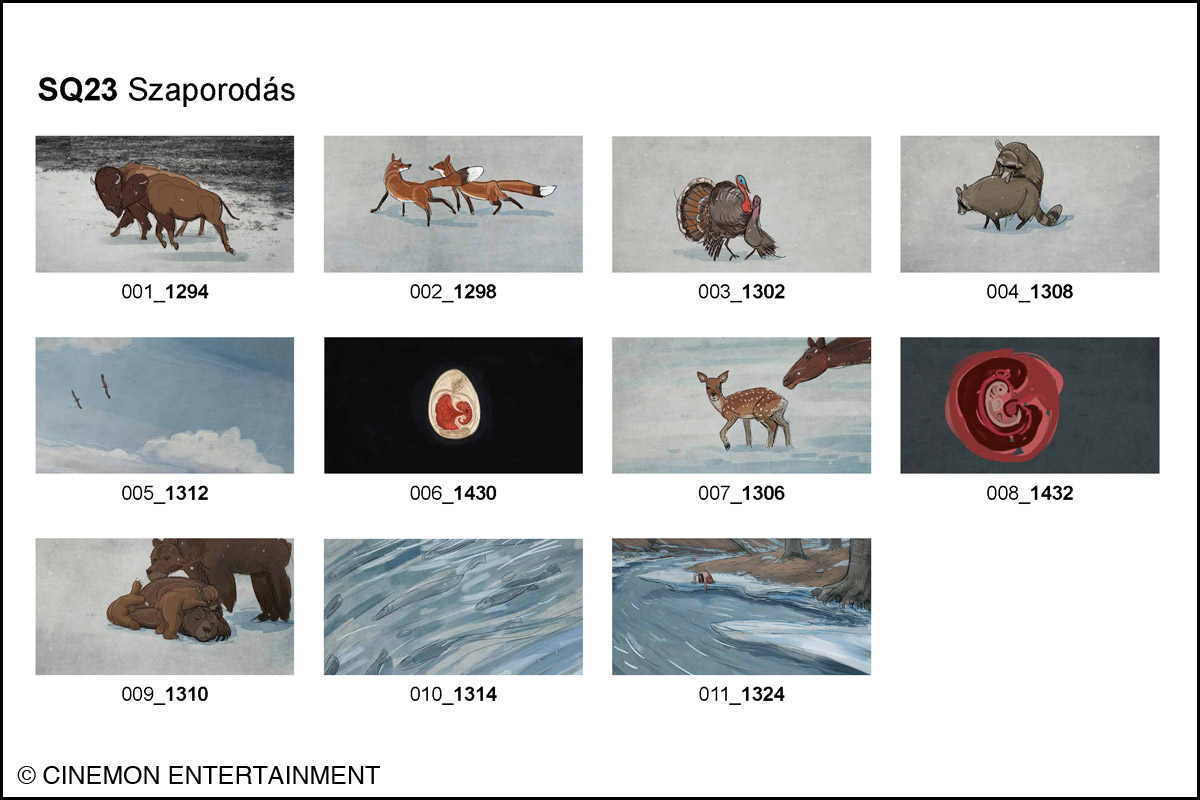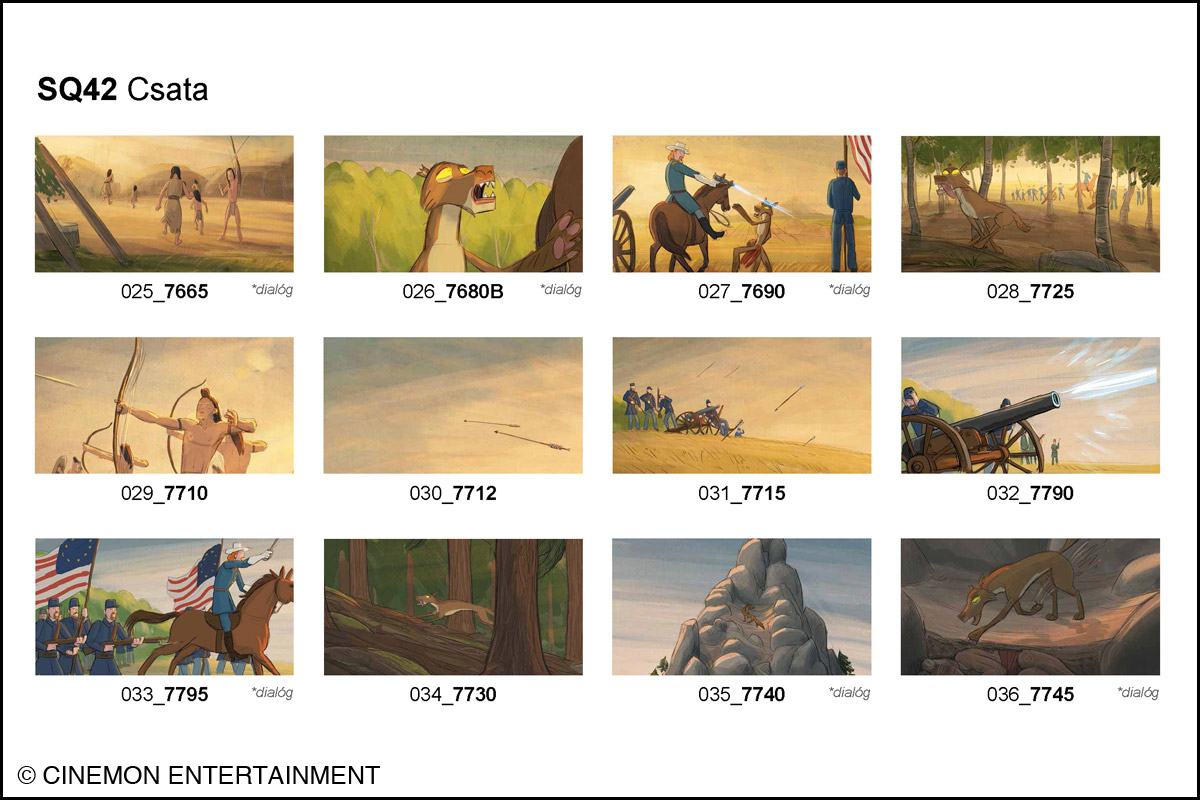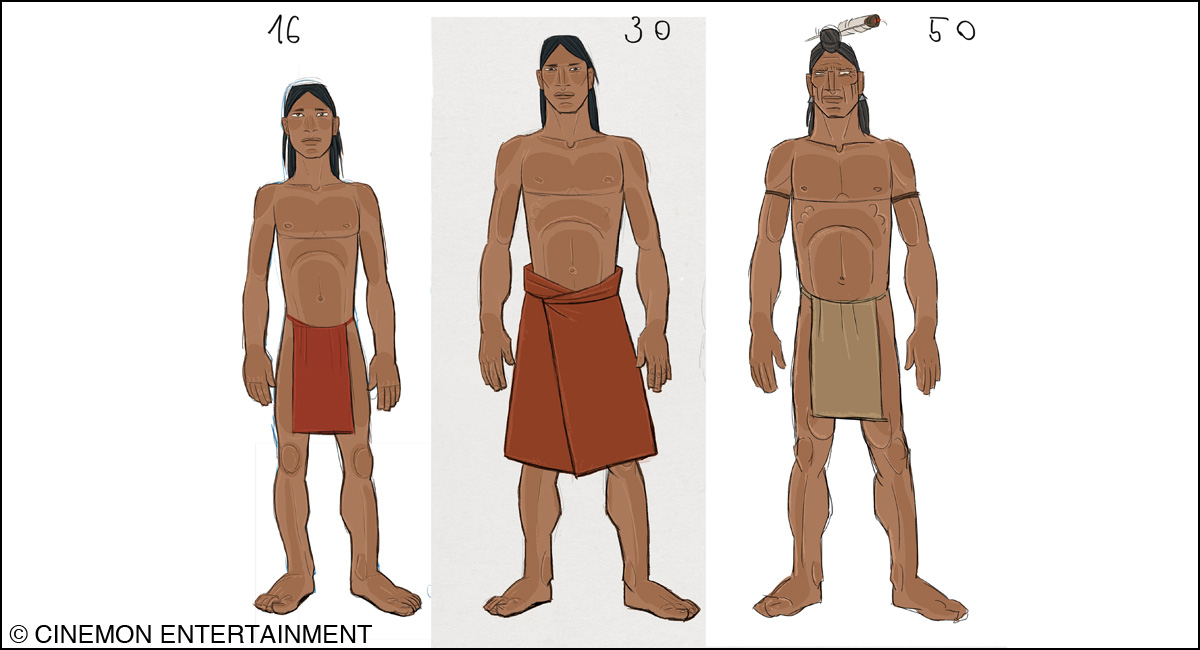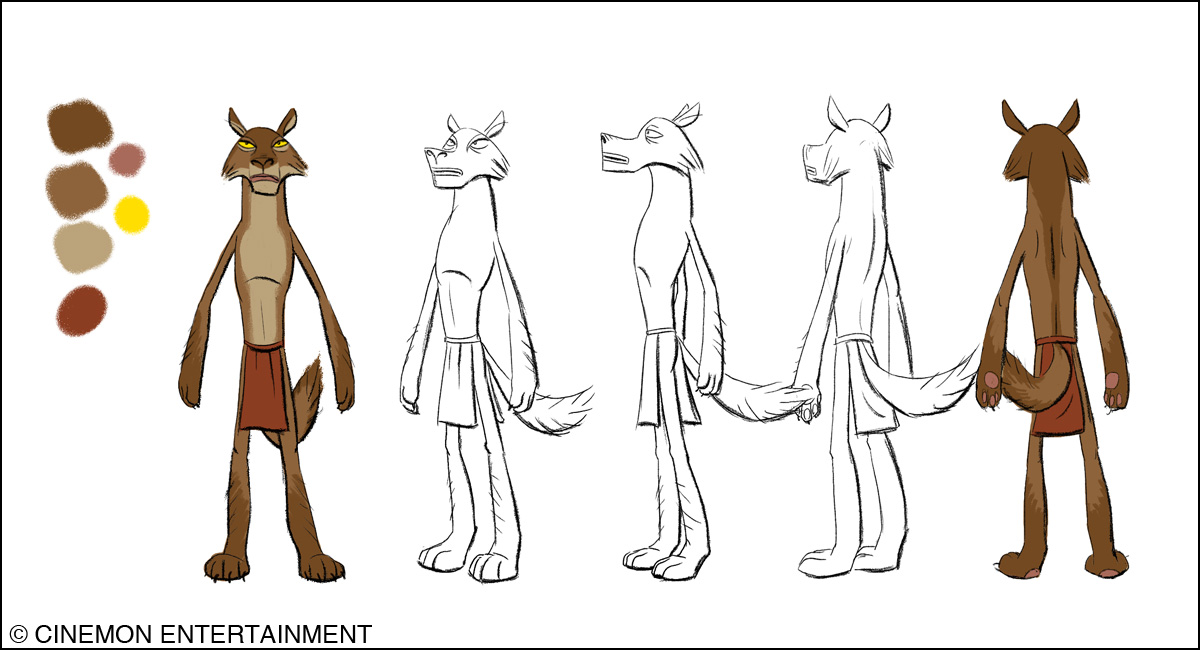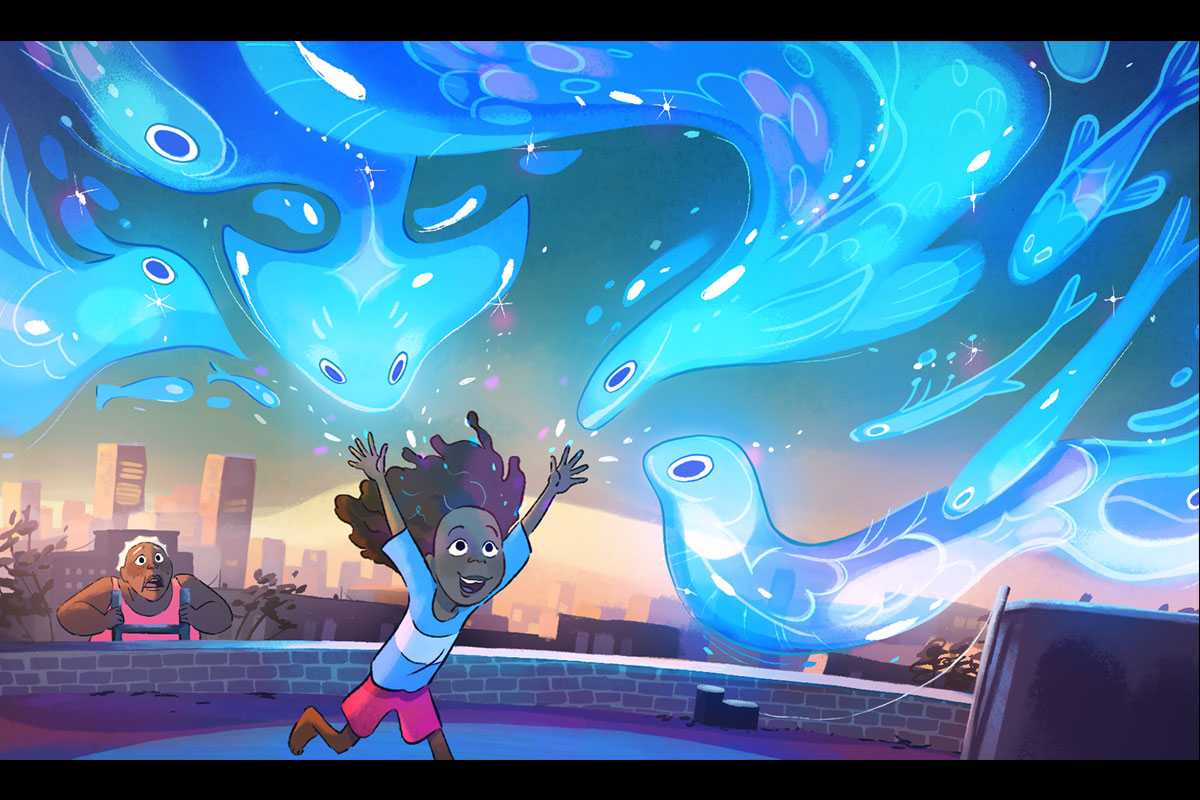Four Souls of Coyote
(Completed)
Synopsis
Four Souls of Coyote is an alternative and more modest creational myth, in which human beings are neither at the pinnacle of nature, nor the king of the world, but only one amongst many creatures. The film goes back to the creation of the world, when the Old Man created life from mud. His every creation is new and unknown and affects the rest of the world. Desire and emotions are unknown as well, and with the evolution of those, the world becomes more complicated. Through adventures filled with animals, magic, hunger, greed and the sacred circle of all creations, the story gives us hope that it is not too late to correct our course – it is the last moment to save Earth.
Four Souls of Coyote
Director: Áron Gauder
Scriptwriters: Áron Gauder and Géza Bereményi
Graphic Author: Áron Gauder
Producer: Reka Temple (Cinemon Entertainment, Hungary)
Target audience: Family
Techniques: 2D hand drawn / 3D digital
Format: 104’
Four Souls of Coyote is an upcoming 2D animation feature film that deals with the epic Native American creation myth, told with a very impressive visual style. The film was nominated for Feature Films in Competition Official at Annecy International Animation Film Festival 2023 and got the Jury Award.
It is Áron Gauder’s second feature film next to The District! and he co-wrote the script with a film director, scriptwriter, and poet Géza Beremenyi.
It demonstrates to us an important topic for humanity: living in harmony between humans and animals. A clip/extract of this impressive film project was awarded a sneak preview at Cartoon Movie 2023.
We are happy to deliver this interview with Áron Gauder, the director of the film, and Reka Temple, the producer of Four Souls of Coyote.
Interview with Áron Gauder and Reka Temple
Hideki Nagaishi (HN): What do you think are the key points of this animated feature film that would attract the audience?
Áron Gauder: It’s about the key elements of creation. Everyone knows the creation story in the bible, but this is an alternative to that. I think the hand-drawn animation, with the richness of visuals, could really attract attention. I hope that with the help of this animation style the audience can dive into this ancient world and become part of the story.
Additionally, a key scene in the film is where the oil company with bulldozers are facing protests from the Native Americans and environmentalists.
HN: What are you hoping that the audience will take away from this film?
Áron Gauder: Hopefully they will rethink some basic questions about our place on this planet and about our existence in the world. Are we really the crown of creation? Do we own this planet or are we just one of the creatures living on it? Are we wise enough to preserve the creation, or we will destroy it driven by greed, and ignorance?
HN: How did this feature film project start?
Reka Temple: Cinemon Entertainment is a long-established animation studio with more than 150 animation artists, with several feature films and television series under its belt. Áron has won the Cristal Award in Annecy for his first feature film, but his second feature about Egill, a Viking Age saga, has not yet reached completion, so he had sought after a studio and a producer capable of fulfilling the production from financing to release. Rather than embarking on the feature film, we have initially produced 2 short films Coyote and the Rock (2015), and Coyote and the White Man (2016) based on indigenous folktales employing high-end 2D hand-drawn animation. Both received overwhelmingly positive reviews on the festival circuit.
We first planned to produce a pan-tribal television series about Coyote, the trickster who is a hero in most Native American tribes’ tales. The narrative describing the creation of the world has surpassed the volume and the complexity of an episode. Moreover, the visuals looked so stunning on wide screen, that we decided that they merited a feature film. A further part of motivation is that no-one has yet presented the Native American creation myth from the natives’ perspective in an animated film.
HN: What kind of creative difficulties or challenges has this film project faced? And how did you deal with them?
Reka Temple: Áron has been deeply involved with the indigenous cultures of the USA for more than 35 years. He has been participating in Native American camps run in Hungary and Eastern Europe for decades. During the communist era scouting and orienteering were strictly forbidden and turning towards the Native American culture provided a sort of escape from the realities of the 80’s in Hungary.
Having conducted profound research, we felt responsibility to the indigenous culture and wanted every bit of the film to remain authentic and reflect our respect. We were fortunate enough to identify American Indian experts who helped us. For example, Dr. Charles Cambridge (an enrolled member of the Navajo tribe and film consultant for Netflix) and Chris Eyre (a Sundance winning film director and producer, enrolled member of the Cheyenne and Arapaho Indian tribes) were hugely supportive.
We wanted to show the aspects of creation and existence that are less known to Europeans. The film warns that humans are fallible creatures who have responsibility for other creatures, too. We cannot consume limitlessly. We must keep our desires in check because if we do not, then the created world will be at risk of destruction. The film’s message aims to be as inclusive as possible by inviting all of creation into the circle of dialogue for cooperation.
We know that our film is a statement, not a protest against any government policy in any way, but it’s rather an ode to nature and to the wisdom of tribal people.
HN: How did you come up with the initial idea of the film’s story?
Áron Gauder: During the Dakota Access Pipeline Project, I felt all of us were called to action and, as I am a film Director, my action is an expression through films and visuals. I was reading Native American tales, and I realized that they offer us an ancient but a very real viewpoint of humanity.
HN: Additionally, how did you develop that initial idea into a 104-minute story?
Áron Gauder: Obviously we had to adjust those tales and myths to fit into a feature film dramaturgy. Also, we wanted to make the message more universal, so we wrote a frame story based on contemporary events in Standing Rock; the controversial construction of the Dakota Access Pipeline in 2016 and 2017 that caught national and international attention.
This story is valid everywhere in the world, not just in North America. So, the scriptwriter invented some fiction according to the heritage of Native Americans that is woven together with the present, because the creation is never finished, and we are all a part of it.
HN: What did you take care in the most on the visual design of the story’s universe and characters?
Áron Gauder: The most important thing was we wanted to visualize a living world where also a landscape is vibrating with life. The characters’ visuals are based on carved totem poles. They are rough and rustic, more like majestic, and all of them have strong personality. Furthermore, the creation appears visually: In the beginning the canvas is visible, and the colors appear one after another, making the visuals richer and richer. When the first blood is spilled on Earth, the color red appears in the leaves, and autumn turn up in nature.
HN: Could you please let us know the story behind the music composition for the film?
Áron Gauder: All the music is performed by contemporary Native American artists. We used lyrical and beautiful songs that fit the ambience of the visuals.
HN: Generally, European animated feature films have several co-production partners because an animated feature film is a big project with a huge production cost. So, it is impressive that this film was produced only Cinemon Entertainment in Hungary. Could you please tell us your story in achieving that big challenge?
Reka Temple: Cinemon Entertainment will celebrate its 30th anniversary next year, which also means that during all these years we have been lucky enough to work on great movies with partners from all over the world. We have been involved in high-end co-productions and earned awards at the most prestigious festivals. Four Souls of Coyote was a special production in many aspects; we’ve never produced an animated feature film by ourselves. I so much believe in co-production and co-operation that it was never my specific intention to complete this project without outside partners.
Two French co-production partners joined the project at a very early stage, but the pandemic created serious difficulties in synchronizing our working strategies with national and international funds. We were fortunate enough to have the Hungarian National film Fund backing us all along. I also believe that having a more modest budget forced us to be focused, including all our energies, heart, and commitment to assembling a group of brilliant artists and technicians. This allowed us to build a free and creative environment capable of producing an extraordinary film in so many ways.
As with any feature film, I have, of course, needed to persevere through some major setbacks and tested my resilience. I deeply believe that the love, energy, and devotion necessary to bring this project to fruition is truly visible on-screen. The pandemic took away the ability to be together physically from us, but in spite of this, everyone in the team felt connected through the beauty of the images of the film and the exchange of creative ideas. We share responsibility for the originality and vitality of the final production.


